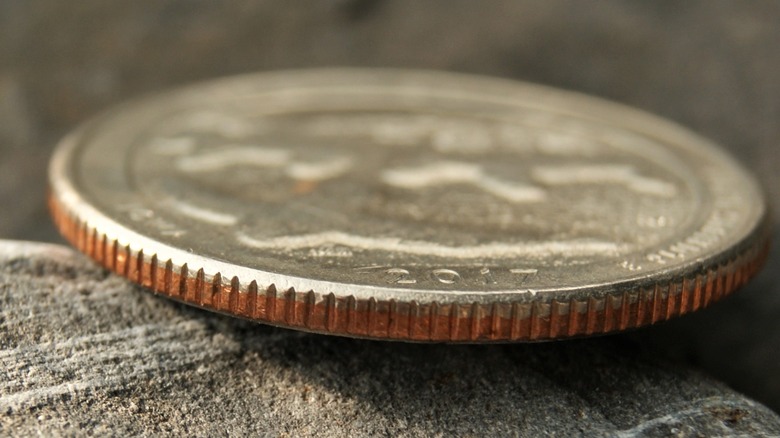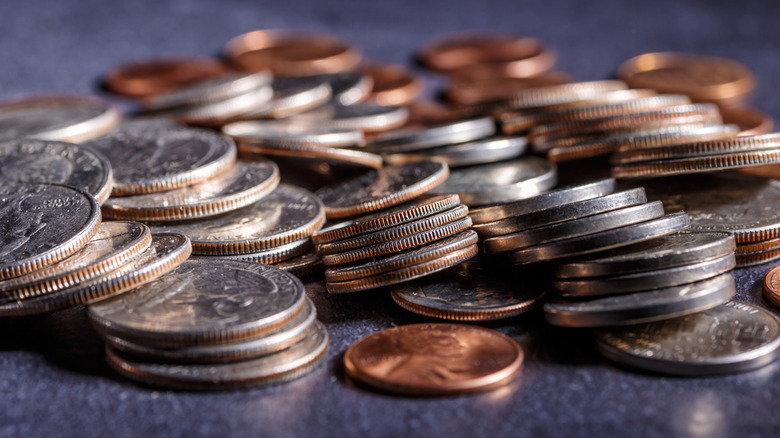The Real Reason Coins Are Made With Ridges
If you are blindfolded and need to tell the difference between a quarter and a nickel or a penny and a dime, one trick is to feel whether the edge of the coin is smooth or grooved. But why do some coins have ridges while others don't?
It turns out the answer dates back to the Coinage Act of 1792, which created the U.S. Mint, according to Insider. This law also required that some coins be made out of gold and silver. The dollar, half-dollar, quarter, and 10-cent coins were all originally made from the precious metals, according to the U.S. Mint. However, this presented an opening for criminals to exploit.
Nefarious actors could make extra money from gold or silver coins through a process called coin clipping, Mental Floss explained. Coin clipping means shaving tiny bits of metal off of a coin's edges. Criminals could then sell the clippings and still use the coin. Putting ridges on a coin made it possible to tell whether or not a coin had been clipped and thus put a wrench in this scheme. The act of cutting edges into a coin is called "reeding," according to Insider, and this technique also made it harder to counterfeit coins. Because pennies and nickels were not made of valuable metals, their edges were never ridged.
Reeding today
Coin clipping became less of a problem during the 20th century. The U.S. Mint stopped making gold coins during the Great Depression, according to Insider. The Coinage Act of 1965 changed the makeup of dimes, quarters and half-dollars because of the end of the silver standard and a global silver shortage, according to Mental Floss. Eventually, the percentage of silver in these coins was reduced to zero. But these coins all still have ridges. Why?
One reason is cost. Coins are created by using a metal stamp called a die, and the edges are created with a part of the die called a collar. The government decided there was no reason to spend money to create new dies. The ridges also remain in place to help the visually impaired, according to Insider. Since dimes and pennies are around the same size, checking for ridges is one way to tell them apart without seeing them.

